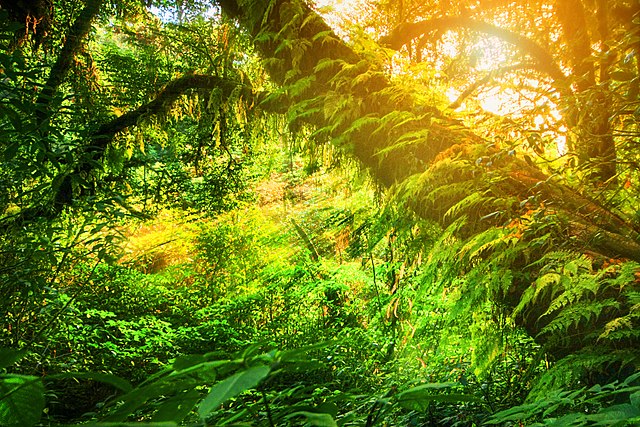Going Solo in Nature
- Details
- Written by José Stevens PhD

From time immemorial, human beings pursued the great outdoors for solitude, observing, listening, and learning the ways of nature to enhance their own survival and empowerment. They sought solo time in nature purposefully because they found this time spent alone to be an invaluable experience. Taoist, Buddhist and Hindu hermits found isolated caves where they spent years developing their meditation skills to enhance their awareness and expand their consciousness. Likewise, shamans from many continents sought isolation in the forms of walkabouts and vision quests to increase their powers and to develop special supernatural abilities. The well-known Native American vision quest is an example of ceremonial alone time dedicated to seeking inner knowledge and direction from the spirit world.
Saints and mystics from all religions are equally known for their long stays in nature, isolated from the business of everyday life. Some of the greatest spiritual teachers of all time deepened their experience through such intense solo time, as exemplified by Jesus’ forty days and forty nights in the desert and Siddhartha Gautama who sat solitarily under the Bodhi tree for many days and nights. Mohammed spent years in retreat meditating, as have many Christian saints. In fact, it would be safe to say that any true spiritual leader who never spent time alone in nature is the exception rather than the rule.
What then is so valuable about solo time that inspires the most advanced teachers and thinkers in world history to invest so much of their time indulging it?
Solo time in nature is worth its weight in gold when it comes to relief from the daily grind of stressful conditions at work, but relief from work stress is far from the only advantage offered by solo time in nature.
More than ever, people are faced with enormous challenges and questions never faced before by those who have preceded them. Too often our leaders try to solve present challenges with old strategies and solutions, a path that results in poor, if not disastrous, consequences. What is so desperately needed is alone time with special circumstances; not just alone time, but solo time in nature in order to recharge the batteries for the challenges that lie ahead.
The mystics and shamans of old went to nature because they knew that the only way to recharge was to connect with something more powerful than they. What better way to recharge than to sit on a mountaintop or under a tree for a few days and nights? They knew that some of that natural power could be gathered and stored using special techniques and applied later to their active endeavors. There is no reason why a business or organizational leader cannot learn and apply similar techniques to recharge, gather, store, and apply the renewed vitality gained from solo time.
FAQ
What is the difference between back packing, camping, and vacationing outdoors and a bona fide solo?
In a true solo there are no outer distractions, nothing to leak or help discharge the power of the experience. Prior to and during the solo there is an all-important declared intent, a riveting focus to break through to gather power and clarity. This focus, this intent, makes all the difference in the world and distinguishes time alone from an ordinary vacation. In fact, a solo is anything but a vacation and therefore should be considered as part of a working strategy. While an intent and solo time in a natural environment are actually sufficient to accomplish a great deal, there are other important additions to a solo that enhance its effectiveness enormously. First of all, during a solo a participant can engage in a series of powerful ancient practices designed specifically to break through old patterns, gather and store vitality, and enhance visioning. Secondly, there is great power in doing a solo under the guidance of a master or experienced solo guide who supervises the experience of several people doing solos in the vicinity. This brings a measure of safety to the experience as well as a sense of community even though the time is spent in solitary. After the solo the group can gather, share, and integrate their experiences, thus providing much greater overall insight and learning.
What happens on a solo?
The good thing about nature solos is that they can be tailored to a vast number of varying needs and requirements. A solo can be planned with simple but adequate food, water, clothing, a sleeping bag and pad, and even a tent, if conditions warrant. A person may elect to take a tent or not, a flashlight or no light and so on. There are no hard and fast rules as there are in a traditional Native American vision quest.
In general, during a solo the participant is encouraged to stay within a circle with a radius of eighty feet in a designated location. Cell phones, pagers, radios, CD and tape players, books, and all such distractions are left behind.
What are the challenges of the solo?
- Boredom. Many people have become addicted to stress and have a challenge experiencing an environment that can be exceptionally peaceful.
- Safety concerns, especially for women. A system of pairing with a buddy in the vicinity and checking in each day increases the safety factor.
- Seasonal insects may drive the soloist into the protection of their tent.
- Cold, heat, rain, and other natural phenomenon
What are the benefits?
Spiritual renewal, relaxation, greater sense of purpose, clarity in concentration, vision and intent, renewed sense of meaning, greater vitality, inspiration for projects and work, more disciplined, imaginative, productive and positive, increased problem solving skills.
© All rights reserved. www.thepowerpath.com
You may make copies of this writing and distribute it in any media you wish so long as you do not charge for it or alter it in any way. You must credit the author and include this entire copyright notice. While the text may be shared, no audio files including lectures, music and/or sound meditations may be posted on any site for any reason without written permission from the Power Path.
Source here
Liked this article? Dive deeper into personal growth and wellness! Check out CrystalWind.ca for spiritual wisdom or explore AromaWorx.ca for natural well-being tips. Spread the positivity—share this with friends on their happiness journey!
Let’s Chat! Drop Your Thoughts Below! ![]()
Related Articles - Journey
Latest Articles
Dive into the Mystical World of the Crystal Wind Oracle Deck!
Get All the Enchanting Details Now!
NEW Expanded Boxed Edition!
Now with 58 Cards for Richer Wisdom!

Imagine a world of inspiration and healing, free for all—made possible by YOU!
Donate Now—Ignite the Magic at CrystalWind.ca!

Epilepsy - Finding A Cure
Your donation can make a difference!
Help us find a cure – donate now!
Unlock Your Light: Join Lightworkers Worldwide on CrystalWind.ca!
Follow Us!
Featured This Month
Sweet Violet
Sweet Violet Faithfulness and modesty. “I will always be true to you.” Helps... Read more
Peridot: The Healer's Stone
Peridot has been used as a Power Stone for centuries. Peridot fosters emotio... Read more
Mabon Magic: Ideas For Fall Decoration And R…
Welcome (almost!) to Fall! We’re turning the Great Wheel once again, toward ... Read more
Sun in Virgo
An Overview of Sun Sign Characteristics for Virgo Virgo is guided by Mercur... Read more
Watermelon Tourmaline
Synonym: Rainbow Tourmaline The watermelon tourmaline is a rare variety t... Read more
Mabon in Modern Times: Fresh Takes on the Au…
The Mabon season begins somewhere around the 21st-22nd of September and cont... Read more
The Vine: September 2nd - September 29th
The Autumnal Equinox ( Alban Elfed ) Celtic Symbol : The White Swan Read more
Crystals for Virgo
As the warmth of summer begins to soften into the crispness of autumn, the Sun... Read more
Virgo Mythology
The Virgo Myth In all of constellation mythology, few legends are as misund... Read more
















































